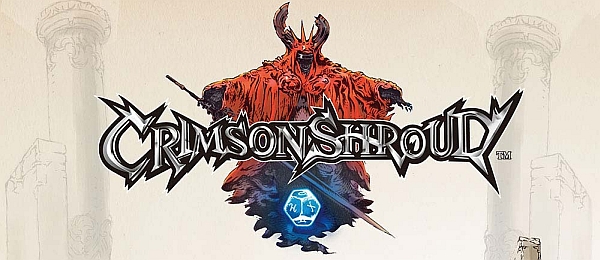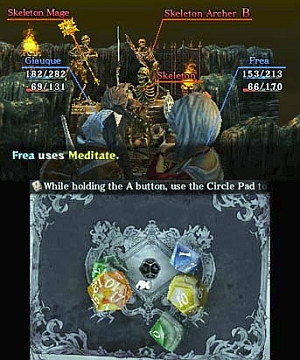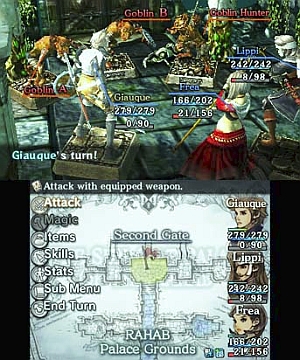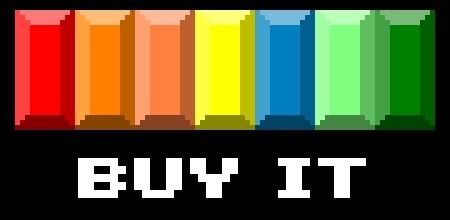
Crimson Shroud is a downloadable RPG from the 3DS eShop that was created by Yasumi Matsuno, a well-known Japanese designer who worked on Vagrant Story, Tactics Ogre: Let Us Cling Together, and some Final Fantasy games (Final Fantasy XII being the most prevalent). He created Crimson Shroud with Level-5 as part of the collaborative project Guild01, bringing his experience and creativity into the story and gameplay. The game is a traditional RPG, but plays more like a Dungeons & Dragons-style tabletop game than a typical video game RPG. With an all-star helming the project in conjunction with a studio like Level-5, did the experimental game work?
Platforms: 3DS
Publisher: Level-5
Developer: Level-5, Nex Entertainment
Genre: Dice-Rollin’ JRPG
Release Date: December 13, 2012
ESRB Rating: Teen
 Crimson Shroud is short for an RPG, but its high quality, interesting storyline, and unique gameplay, as well as the option to continue playing in New Game+, gives it a lot of staying power. The story goes back and forth, with the cutscenes starting you out in the present, and the gameplay happening in flashback. You have control of three characters – Giauque, Lippi, and Frea. Giauque is the leader, and specializes in melee combat; Lippi is the archer and the comic relief; Frea is the primary magic user and also the healer. The characters are “Chasers,” people who are paid to find other people. Throughout the game, you have the option to watch cutscenes going into detail about how the party came together, fleshing out the characters more and adding another dimension to the story.
Crimson Shroud is short for an RPG, but its high quality, interesting storyline, and unique gameplay, as well as the option to continue playing in New Game+, gives it a lot of staying power. The story goes back and forth, with the cutscenes starting you out in the present, and the gameplay happening in flashback. You have control of three characters – Giauque, Lippi, and Frea. Giauque is the leader, and specializes in melee combat; Lippi is the archer and the comic relief; Frea is the primary magic user and also the healer. The characters are “Chasers,” people who are paid to find other people. Throughout the game, you have the option to watch cutscenes going into detail about how the party came together, fleshing out the characters more and adding another dimension to the story.
What’s different about Crimson Shroud begins with the way it looks. The characters move from room to room on a map, and when they appear in the room, they’re just figures on bases, much like the kinds you would use if you were playing Dungeons & Dragons. Their expressions don’t change; nothing on them changes, even if you adjust their weapons and armor. You don’t see them move around at all – they’re simply placed in each room as you come upon it. Sometimes, if the scene calls for it, they’ll move around to other parts of the room, but there is no actual animation to it – it’s just stills that cut from one shot to the next.
The cutscenes, on the other hand, are interwoven with artwork. As you learn more about the Crimson Shroud and the mythology surrounding it, you are introduced to different characters from the history of this universe, and these scenes appear like stills from an anime. There are four chapters, and each one has various cutscenes, some of which you can opt out of, depending on how involved you want to get into the story.
 But the real meat of the game is the actual gameplay, and how the items, magic, and levels are applied to each character. Fights are menu-driven affairs, as in most RPGs, but the one thing that’s different about Crimson Shroud is that you actually roll dice when you’re fighting. Melee and ranged attacks, along with some magic attacks, are applied with straight probability. But when you use “Meditation” (to up your magic points) or try to cast specific spells, you will have to roll dice. You can either hold down the A button and then let it go, or you can stir the dice around on the screen with your stylus to make them roll everywhere. This makes the game feel even more like Dungeons & Dragons, which can be a difficult feeling for a game to successfully capture digitally.
But the real meat of the game is the actual gameplay, and how the items, magic, and levels are applied to each character. Fights are menu-driven affairs, as in most RPGs, but the one thing that’s different about Crimson Shroud is that you actually roll dice when you’re fighting. Melee and ranged attacks, along with some magic attacks, are applied with straight probability. But when you use “Meditation” (to up your magic points) or try to cast specific spells, you will have to roll dice. You can either hold down the A button and then let it go, or you can stir the dice around on the screen with your stylus to make them roll everywhere. This makes the game feel even more like Dungeons & Dragons, which can be a difficult feeling for a game to successfully capture digitally.
Many spells and skills have an elemental quality to them, like fire, or air, or dark. Chaining these together in specific orders can give you bonuses, and bonuses give you extra dice that you can keep in a pool and use to add damage or healing, depending on what you’re applying them to. This is a great feature, especially if you’re able to build up enough to add six dice to an attack and actually roll well. As a Dungeons & Dragons player, I always like it when I get to roll bonus dice!
Certain rooms have monsters in them, which you usually have to fight the first time you come upon them. Subsequent visits to the room typically offer you the chance to avoid a confrontation. If you try to avoid the battle, you have to roll the dice and get over a certain number. I found myself fighting as much as possible, because fights are the only way to obtain items. This is how you get everything from weapons, to armor, to consumables that replenish your hit points and magic points, to special items that you need to progress in the story. (Hint: if you’re ever at a point where you can’t figure out what to do next, there’s a good chance you just need a specific drop from a monster to keep going.) When the battle ends, you have a certain number of “barter points” that you can use to obtain items, meaning you won’t always get every item that is dropped, and will have to pick and choose the items based on their points.
 Once you’ve got your items, you can equip them from the menu. One important thing that makes Crimson Shroud different is that many of your spells and skills are not learned, but rather come attached to the items you have equipped. This means you have to be very careful that you don’t unequip something if you’ve come to depend on the spells it’s giving you, which can be hard to remember at first. Moving around your inventory and shuffling your equipment becomes more than just looking at stats – it’s a much deeper system that requires more attention and can give you far more interesting combinations.
Once you’ve got your items, you can equip them from the menu. One important thing that makes Crimson Shroud different is that many of your spells and skills are not learned, but rather come attached to the items you have equipped. This means you have to be very careful that you don’t unequip something if you’ve come to depend on the spells it’s giving you, which can be hard to remember at first. Moving around your inventory and shuffling your equipment becomes more than just looking at stats – it’s a much deeper system that requires more attention and can give you far more interesting combinations.
You can also meld items together, improving their stats and changing the magic attached to them. Items that are the same can be melded together to give you that item +1, +2, etc. To meld, you must have Pure Azoth, an item dropped from monsters. You can also meld spells to your items, but this can get rid of spells that are already on the items, so be careful when melding! Be sure to test it out, and save often before you start doing it.
Finally, the game doesn’t actually have a set leveling system. Your characters don’t gain any experience; rather, as they fight more monsters, they can learn more skills. You get to choose among three different spells each time, building up your repertoire of set skills your characters have. This is a unique and interesting way for a party to progress, and I found myself choosing complementary skills for the characters, keeping in mind what they had already and what they needed to help themselves and each other.
Crimson Shroud is a different take on the traditional RPG, and the 3DS is the perfect place for it. It’s an easy game to pick up and put down, and it’s fun for playing on-the-go as well as just sitting around on a lazy day. While the graphics and music aren’t anything to write home about, the style, gameplay, and story are interesting, unique, and compelling, especially for fans of the RPG genre. For $4.99, this game is definitely worth adding to your 3DS library.

Review Disclosure: A review copy of Crimson Shroud was provided by Level-5 for the purposes of this review.






